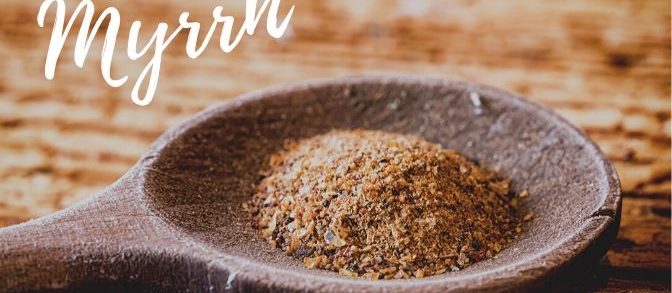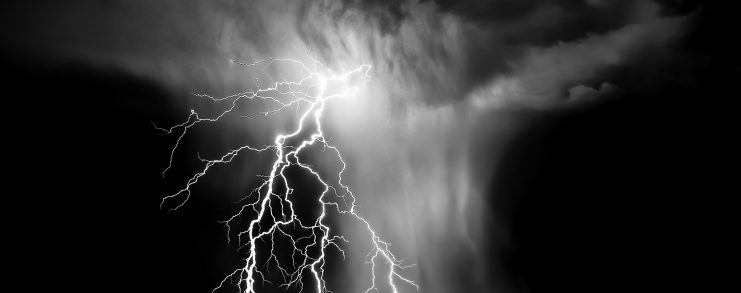The Gift of Myrrh
This is our fifth Christmas without Zoe. We never had a chance to celebrate a single Christmas with her, but the heartache of her not being present is still there. Five Christmases without our first daughter. Five seasons of celebrating Christ’s birth without being able to share that with the baby girl that was born to us. Sometimes it feels heavy, sometimes it’s just a fact of the new normal we live in, but either way it’s hard.
When someone you love passes away, the holidays can be tough. Maybe it’s the thought of holiday traditions without someone who was such a big part of those traditions. Maybe it’s the feeling of loss knowing that you won’t be able to pass those traditions on to the child that is no longer physically present. Perhaps it is the dull ache that is felt knowing that someone is missing. Maybe it’s all of those reasons. Maybe it’s something else.
It doesn’t really matter why those holidays are specifically tough, the truth is they are tough.
Knowing this, we wanted to share with you some reflections on this Christmas season that we sense God has been impressing upon our hearts. We wanted to take a time to remember the why about Jesus’s birth, while focusing on some of the what to it.
Let’s look at the gifts that were brought to Jesus after his birth.
We Three Kings of Orient are,
Bearing gifts we traverse afar
The Bible doesn’t show us the names or the actual number of the wisemen that came to visit Jesus, but we do know that they came and they came bearing gifts. ‘Three Kings of Orient’ is a great song that talks about the significance of those gifts that were given.
Gold is the first gift:
Born a King on Bethlehem plain,
Gold I bring to crown Him again,
King for ever,
Ceasing never
Over us all to reign.
Throughout the ancient world, in the Bible and outside, we see that gold was a gift given to kings. It was a signifier of wealth and prestige. However, it was also used in the Jewish tabernacle/temple worship. In fact, the gold overlays that we see given in both the tabernacle and temple instructions show that the presence of God (Holy of Holies) was full of gold.

The gold didn’t just represent that the child born was a king, but also it was indicative of the return of the presence of God to the earth, but this time accessible in the form of a man. The son of God born as man, in flesh, God with us. We celebrate because the king was born, but we also celebrate because we have access to this king.
Frankincense is the next gift:
Frankincense to offer have I,
Incense owns a Deity nigh:
Prayer and praising
All men raising,
Worship Him God on High.
Frankincense is an aromatic resin that is still used to this day. It also was associated with royalty and deity. It would not have been present in a common household. While there is a close connection with royalty, it was also connected to deity. Exodus 30 gives us a picture of how frankincense was used in worship. In fact its use, in mixture with other elements, was burned as a holy incense to God. It was to be viewed as holy, set apart, not to be used in any other way. Again, it was also closely connected to the presence of God in the tabernacle/temple.
It was a gift showing the deity of Christ, but also an allusion to his priesthood. A priesthood that gives us access to the Father. God’s priestly role on earth, Jesus as our intercessor. Jesus who is worthy of our worship.

Finally we come to myrrh:
Myrrh is mine; its bitter perfume
Breathes a life of gathering gloom;—
Sorrowing, sighing,
Bleeding, dying,
Sealed in the stone-cold tomb.
Myrrh is similar to frankincense, in that it comes from a tree as well. It is also used in burning incense, but it’s also use as a spice for embalming purposes. It was expensive as well, again signifying the importance of the child that had been born. Exodus 30 also mentions myrrh as a spice used for incense in worship. Clearly signifying, again, the presence of God through worship. However, it was not just used in worship.
Myrrh was commonly used as part of the preparation of a body for burial. It was part of the embalming process in Egyptian burial, but it was also used to prepare a body to be entombed.
The myrrh foreshadowed the reason Jesus came. He came because he was to die. He came because he was going to defeat death. He came because he was the perfect sacrifice, the King of Kings, God-become man, present on earth to die for us.
As much as we celebrate the joy and the expectation of the birth of our savior, we need to hold in tension that his birth was so that he could suffer and die. Myrrh is symbolic of that suffering.
Jesus’s birth is about his death. I know that might sound like a contradiction, but it’s true. Without the birth, we don’t have the death. Without his death, we don’t have life; we don’t have the hope that we do have.
As I think about the fifth Christmas without Zoe, I can choose to mourn the loss of what could have been, the loss of the dreams that should have been, and I can choose to worship. I don’t have to do either one or the other, I can do both.
When we worship in the midst of mourning, it doesn’t take away from the grief and pain, but rather it gives it meaning. We enter into that suffering and receive that myrrh with Him. We join in with his suffering and we worship.
We have a choice because over 2,000 years ago, Jesus entered the world he created as a baby. He came because he was to suffer and die. He came because that was the way for us to be reunited with him. He came because, in coming, he conquered death and offers us life. Our loved ones are experiencing that life as we will one day experience. But we can have life now, because of that birth.
So as you think of this Christmas, without the people who are no longer here, think of the hope that we have. We will one day be reunited with them, because of the birth we now celebrate!
-hopefamilycareministries.org










